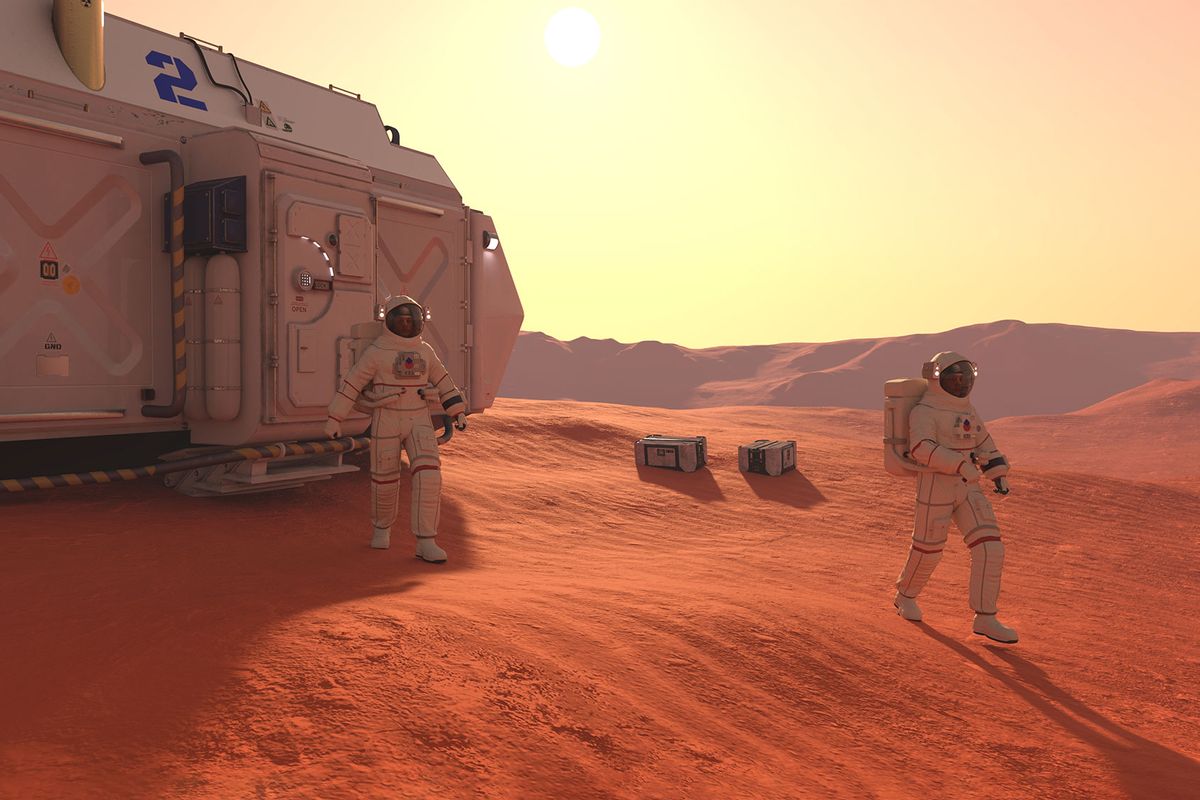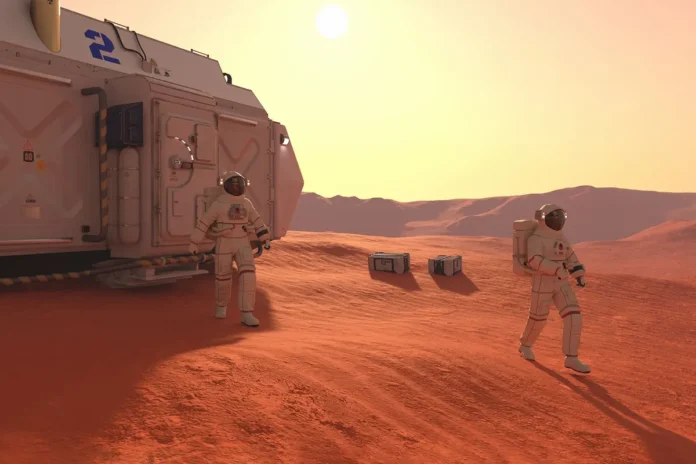Human blood Mars homes could be the surprising key to building sustainable habitats on the Red Planet. Scientists have proposed an innovative solution to combine human blood and Martian regolith to create a protein-enhanced cement known as AstroCrete, promising an efficient and resourceful way to address construction challenges on Mars.
Building With Human Blood And Martian Soil
Transporting construction materials to Mars is impractical due to its distance of 62 million kilometers from Earth. To tackle this logistical hurdle, researchers from the University of Tehran suggest using locally available resources. The proposal involves mixing Martian regolith with serum albumin from human blood plasma to produce AstroCrete, a material that is up to 300% stronger than other Martian concrete alternatives.
This groundbreaking idea draws inspiration from history. Ancient Roman builders incorporated blood into mortar to enhance its strength—a technique that demonstrates the feasibility of utilizing biological materials in construction.

The Unique Properties Of AstroCrete
AstroCrete leverages the natural proteins found in human blood, particularly serum albumin, as a binding agent. This method not only ensures durability but also maximizes resource utilization on Mars. Research indicates that one astronaut could produce enough serum albumin within 72 weeks to construct a small Martian dwelling.
Additionally, other bodily fluids such as sweat and tears, as well as waste products like urea, can be incorporated to improve the material’s strength. These findings highlight the potential of biological fluids in creating durable, eco-friendly building materials for extraterrestrial environments.
Alternative Construction Materials On Mars
While AstroCrete represents a breakthrough, scientists are also exploring other methods for Martian construction. In-situ resource utilization (ISRU) focuses on harnessing local materials such as calcium carbonate for lime mortar or sulfur deposits to produce sulfur concrete. These alternatives offer resistance to corrosion and adaptability to harsh Martian conditions.
Another promising avenue involves bioengineering. Researchers are investigating the use of microbes to create biocement, while robotic systems could utilize 3D printing technologies to build structures using regolith-based compounds.

Challenges And Ethical Implications
Although the idea of using human blood and bodily fluids for construction is innovative, it raises ethical and health concerns. Astronauts on Mars already face extreme physical and psychological stress, and donating biological materials for construction could add to their burden.
The concept also challenges the moral boundaries of space exploration. While maximizing resource efficiency is critical, ensuring the well-being and autonomy of astronauts must remain a priority.
Historical Insights And Modern Applications
The use of human fluids in construction is not entirely new. The Ancient Romans utilized blood to improve the durability of their mortars, a testament to the ingenuity of combining biological and natural resources. Today, this concept finds a futuristic application in AstroCrete, bridging ancient techniques with cutting-edge space technology.
By leveraging such resourceful methods, humanity edges closer to establishing a permanent presence on Mars. These advancements not only pave the way for sustainable living on other planets but also provide insights into optimizing construction techniques on Earth.
Future Prospects For Martian Habitats
As humanity inches closer to Mars colonization, innovative solutions like AstroCrete highlight the importance of adaptability and resourcefulness. With the integration of local Martian resources and biological capabilities, building sustainable habitats becomes a realistic goal.
The focus on using locally available materials aligns with the broader objectives of minimizing dependency on Earth-based resources. As technology evolves, these methods could revolutionize construction not only on Mars but also in extreme environments on Earth.
By exploring these cutting-edge solutions, the dream of establishing a self-sufficient Martian colony inches closer to reality, underscoring the limitless potential of human ingenuity. These groundbreaking ideas redefine resource utilization for Mars colonization efforts

